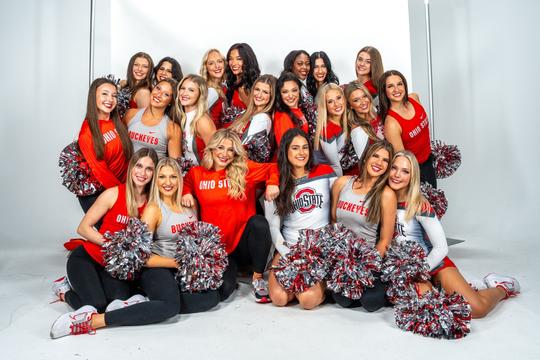Dance has been hovering over the line between sport and art form for as long as it has existed in a formal setting. In the modern day, however, more and more people and groups are moving towards classifying dance as a sport, especially in the wake of the rise of competitive dance and popularized dance conventions. According to The Gazette, around seventy-seven percent of people currently consider dance to be a sport, but many still do not – and that “many” happens to include the National Collegiate Athletic Association (NCAA).
The NCAA does not qualify dance as a team sport, nor is it on the list of Emerging Sports for Women (a list of developing female sports across colleges). The generalized definition of an NCAA sport – according to the article “Not Just Pretty Girls With Pom Poms: An Argument for the NCAA and the Office of Civil Rights to Recognize Collegiate Dance Teams as a Sport,” by dance and law expert Emily Owens Price – is a team activity “involving physical exertion” which “operates under standardized rules…ratified by at least one official regulatory agency or governing body.”
It is clear that dance involves physical exertion – as a dancer myself, I will be the first to proclaim that dance is draining to the point of total exhaustion – and so that can easily be checked off the list. The more complicated point of classification for dance teams to be considered college sports is the phrase that requires them to function under regulations confirmed by some sort of board or agency. While dance may not be a sport with specified rules (unlike, for example, basketball or baseball), dance competitions do have a set of regulations that have been corroborated by an organization.
Typically, the issue with competitions for college dance teams is funding. It’s an illogical and unfair loop – because dance is not considered an NCAA sport, dance team members receive no athletic benefits or aid, and they are in many cases not eligible for athletic scholarships. This results in difficulty traveling for and raising money to attend dance competitions, and this affects dance teams’ ability to be classified as sports as explained above.
The coach of our own San Dieguito Academy dance team, Nalani Dikitanan, was a member of the San Diego State University dance team for all four years of her university experience, and she reflected upon her experience as a dancer in college. ““We had to do everything in terms of traveling…we had to fundraise to go to Nationals, and we had to pay for our own spirit wear,” she explained. “Other student athletes got…amenities that were not accessible to us. It’s not that were treated poorly…we just had limited resources as nonathletes.”
It is obvious that dance teams should be deservedly classified as NCAA sports. Not only do they technically meet the association’s requirements to be a sports time, but they are clearly negatively affected by not being considered a sport and their status should thus be re-evaluated. However, the NCAA isn’t the only organization that has seemingly snubbed collegiate dance – the Office of Civil Rights (OCR) has refused to classify dance as a sport as well.
The OCR enforces Title IX, as well as various other articles intended to prevent discrimination in the American education system, and it has its own classifications for college sports. Under their guidelines, aforementioned author Owens Price explains in her article that the main purpose of a college sports team must be to compete “rather than to support or promote other athletic activities,” which targets dance and spirit programs – the only athletic groups who cheer for other teams. To attend a major college dance competition, however, each team that registers must be a certified spirit team, thus hypocritically barring them from meeting the OCR requirements and being considered a sport.
There is, however, an explanation for the apparent targeting of dance programs in the OCR rules. When Title IX was passed, it was intended to engage more women in sports. In the article “Sports, Sex, and Title IX,” the (sexist) author claims that dance and cheerleading are more attractive to women than other sports. The OCR’s clause detailing how if a team’s primary purpose is to support other teams, that group is not a sports team, may actually have been a well-intentioned play at engaging women in sports they may not have otherwise pursued.
Following Title IX, it was difficult to recruit a sufficient number of women to play college sports, but dance teams continued to be a popular option. Women likely strayed towards the sports that have been previously open to them (such as dance and cheer) because they were apprehensive about trying other sports, which was exactly what the OCR was trying to prevent.
It is plausible that the OCR was trying to attract women into “traditional” sports to make meeting Title IX guidelines easier. They likely also targeted spirit programs because of the misconception that they perpetuated sexism, as dance teams in that era frequently involved scantily-clad women cheering for men with a ball. Dance has evolved extensively since then, though, and while college dance teams now perform for both male and female sports, this is not their sole identity or purpose.
Dance teams should be considered both OCR and NCAA sports. College dancers have endured subpar treatment as “nonathletes” for too long, and it is time to recognize their dedication and abilities by classifying dance as an official collegiate sport.

